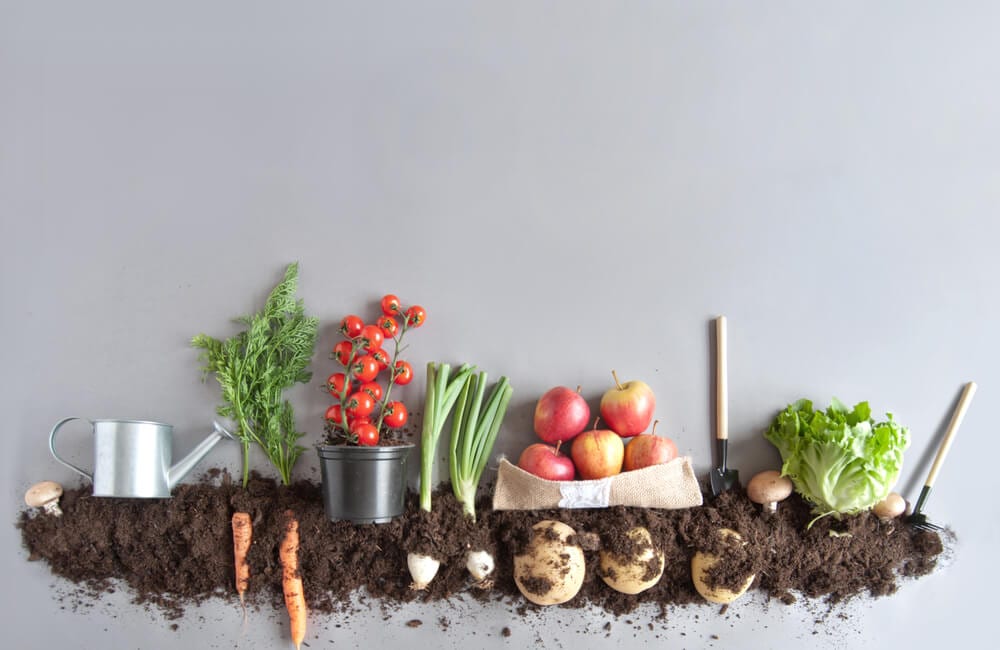Commissary Shopping Tips: Organic Foods: Worth The Higher Prices?
Home » Military Money »
You may have noticed foods in the commissary with the USDA organic label, and you always assumed that these foods probably are healthier for you and your family and better for the environment.
But as a military wife, you surely have coped with some tight financial months when the higher-priced organic foods were just too darned expensive. When it comes down to paying bills, saving for your children’s college or buying more expensive food, something’s gotta give.
It is well known that organic foods contain lower levels of pesticides than conventionally-grown foods. But should you pay more for them? Perhaps, especially if you have children.
First, a bit of history. It wasn’t until 1996 that the Environmental Protection Agency (EPA) began to monitor pesticides in foods that children commonly eat. Until that year, “acceptable” toxicity levels for pesticides were set for the average adult male – not an infant or pint-sized child who often ate the same foods again and again.
Pesticide levels that are easily legal and tolerable for a man may pose an unnecessary risk to a child or unborn baby. The presumption was that rapid rates of development and metabolism changes in infants and children could make them more vulnerable than adults to toxins. To right this anomaly, the Food Quality Protection Act became law in 1996, requiring the EPA to identify safe pesticide levels for adults, children and infants, as well as regulate new and widely used chemicals.
The primary target is a group of chemicals called organophosphates (OG). Today, about 19 percent of all fruits, vegetables and grains have detectable levels of OG – down 10 percent since 1996. While this is a good start, Consumers Union says the chemicals still are applied to nearly half of the foods eaten by kids, including apples, bananas, carrots, green beans, oranges, peaches, pears, potatoes and tomatoes. Consumers Union suggests purchasing these foods in an organic version for children.
When children eat organic foods, the risk from pesticide exposure drops to well below what EPA considers a negligible hazard to health. And the levels and number of chemicals in the bloodstream drops very quickly – within as little as seven days of eating organic foods.
But what about the cost? Your budget probably can’t succumb to buying all organic foods. Shopping on base helps a lot; organic foods at the commissary are much less expensive than at in-town supermarkets. Another tactic is to limit your organic purchases to foods that have the most pesticide exposure.
The Environmental Working Group maintains a “Shopper’s Guide to Pesticides in Produce,” a list of common foods containing the highest pesticide residues. It says these 12 popular fruits and vegetables are consistently the most contaminated with pesticides and recommends buying them organic: apples, bell peppers, celery, cherries, grapes (imported), nectarines, peaches, pears, potatoes, red raspberries, spinach and strawberries.
The fruits and vegetables least likely to have pesticides on them, according to the Environmental Working Group, are asparagus, avocado, bananas, broccoli, cauliflower, corn (sweet), kiwi, mango, onions, papaya, peas and pineapple.
It’s important to know that the pesticide residue levels are recorded after these foods are washed and peeled for normal consumption. On the other hand, the lists are not meant to imply the foods exceed EPA tolerable levels for male adults – but it’s a different story for children (and pregnant women).
Finally, organic foods are more nutritious than conventionally-grown foods. For years, critics said such a notion was an old wives tale. But research now shows that organic food is indeed higher in vitamin C, iron, phosphorus, magnesium and a host of other nutrients – by as much as 30 percent. Furthermore, nutrients in conventionally-grown foods have declined by five to 35 percent in the last 50 years because of pesticides, fast-growth fertilizers and poor soil conditions.
The next time you see the green and white organic symbol in the commissary, ask yourself: Is this something my kids eat often? If the answer is yes and your budget allows, consider adding it to your cart. And if you want to purchase certain organic foods not offered at the commissary; ask the manager to place an order. Most organic brands are now owned by large corporations, so availability isn’t a problem.
By Kimberly Lord Stewart

